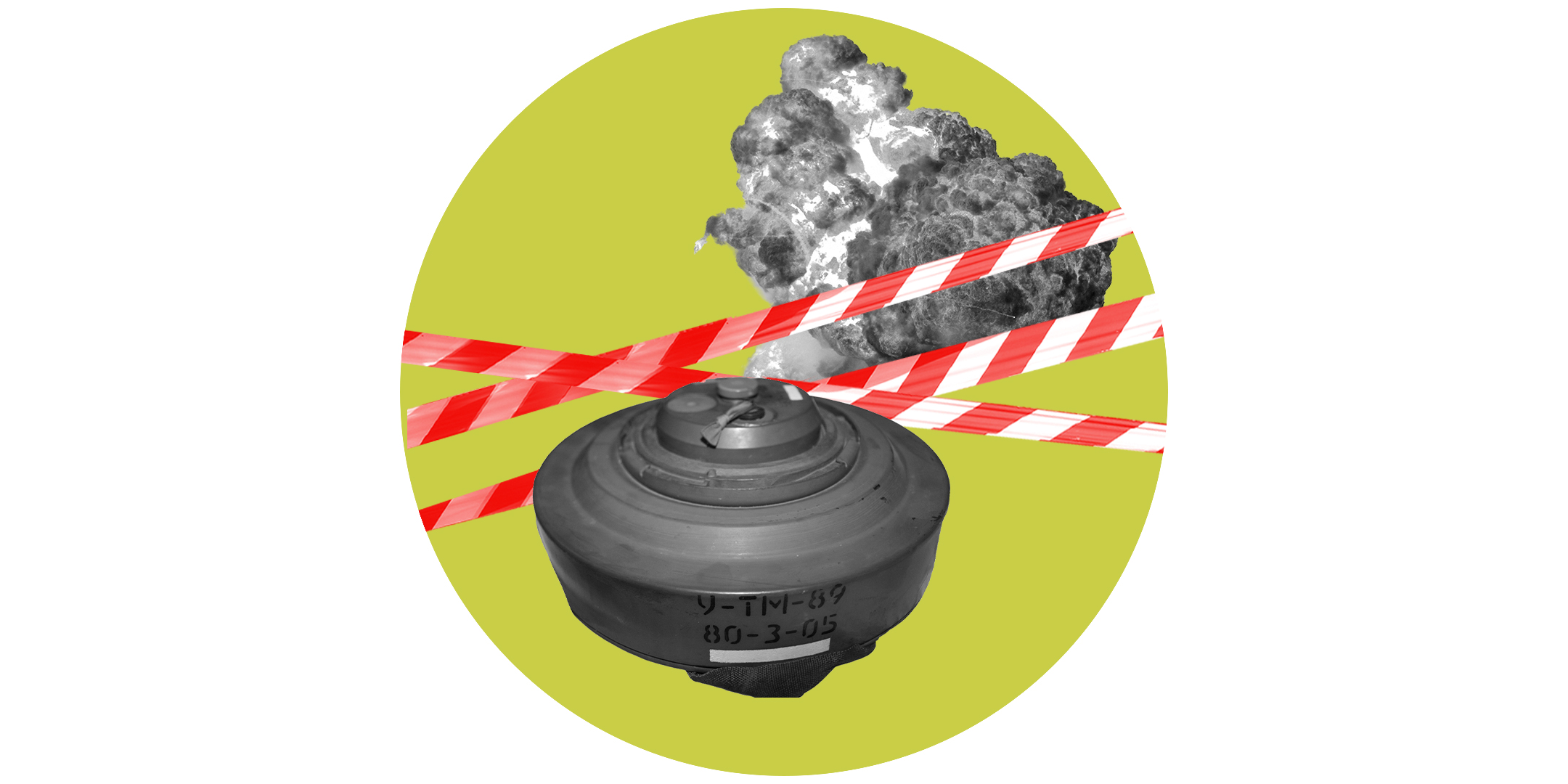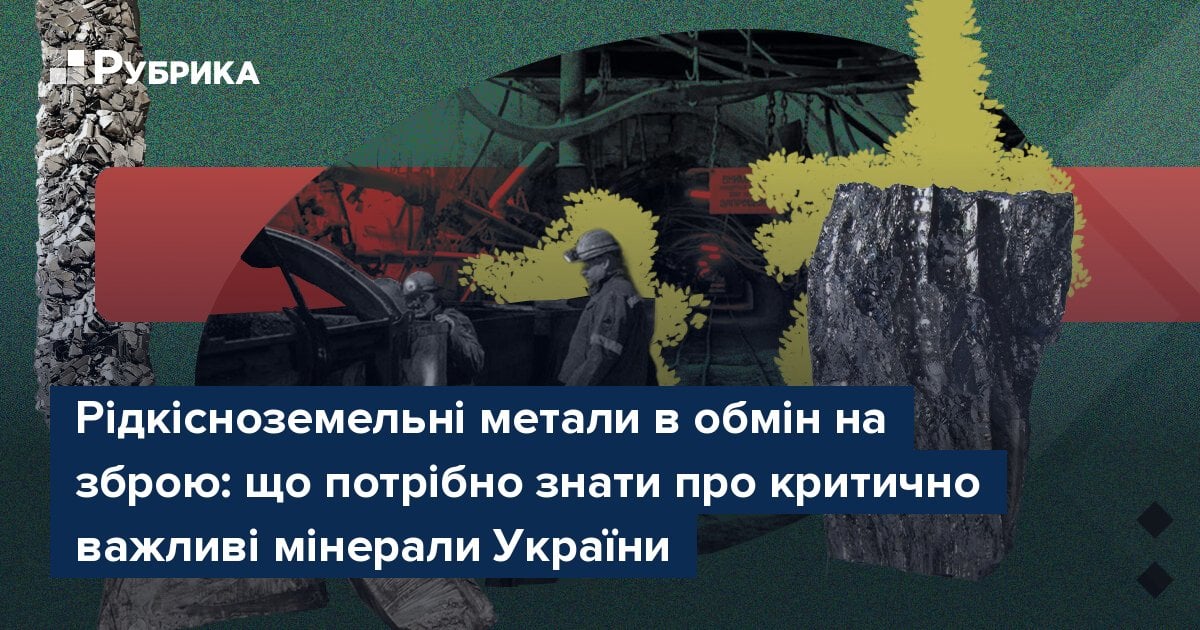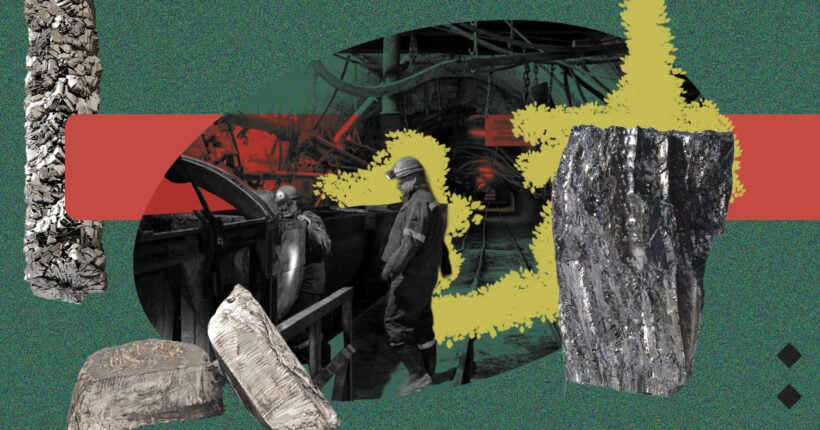
«Трамп заявив, що подальша підтримка України можлива в обмін на її рідкісноземельні елементи» — такі заголовки нещодавно з'явилися на перших шпальтах світових ЗМІ. «Ми хочемо укласти угоду з Україною, за якою вони гарантують собі нашу допомогу своїми рідкісноземельними ресурсами та іншими активами», — американський президент заявив журналістам.
Критично важлива сировина, зокрема нікель, уран, мідь, літій та рідкісноземельні елементи, неймовірно цінується в Європейському Союзі та США. В останні роки світовий попит на ці важливі мінерали стрімко зріс, оскільки вони необхідні для розвитку та підтримання виробництва «зеленої» енергії, технологічних галузей тощо.
За інформацією експертів, Україна має приблизно 20 000 задокументованих родовищ, які містять 117 видів корисних копалин, у тому числі понад 20 критично важливих мінералів і рідкісноземельних металів. Їхні запаси «оцінюються в 11,5 трильйонів доларів США».
В останні роки влада активно просуває ресурсний потенціал України. Під час виступу в парламенті з презентацією «Плану перемоги» президент Зеленський назвав українську критичну сировину «глобально важливою» для виробництва відновлювальної енергії. Він також наголосив, що вона може зміцнити безпеку Європи та зробити її ресурсно незалежною від росії та Китаю.
Українські компанії підхопили цей «месседж» і розповідають про гірничодобувний та інвестиційний потенціал України на міжнародних конференціях, таких як Raw Materials Week в Брюселі. Рубрика ж пояснить, якими ключовими мінеральними ресурсами багата Україна, та як вона може стати важливим постачальником критичної сировини на світовому рівні.
7 критично важливих корисних копалин України
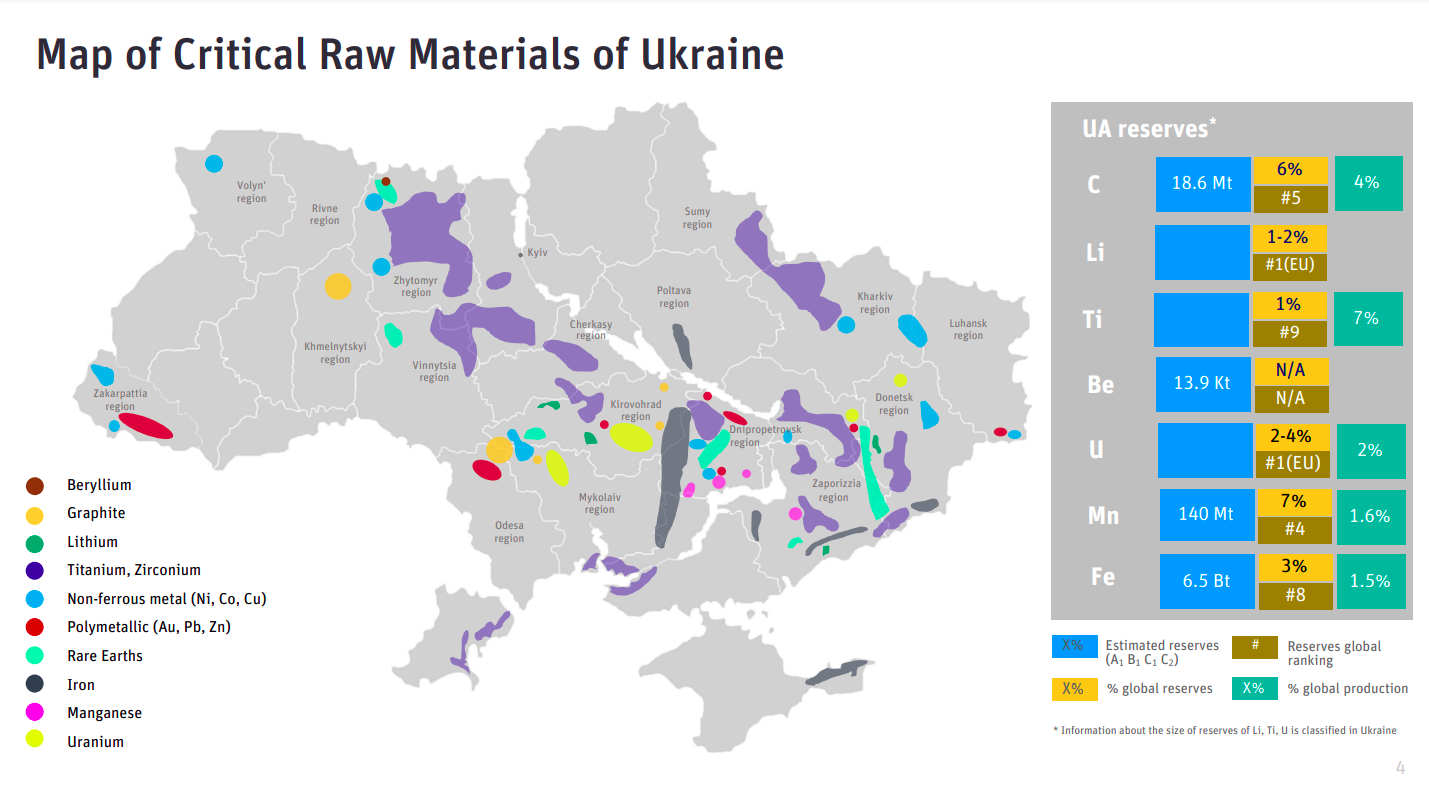
На мапі зображені родовища рідкісноземельних елементів та іншої критично важливої сировини в Україні. Мапа: Державна служба геології та надр України
1. Літій
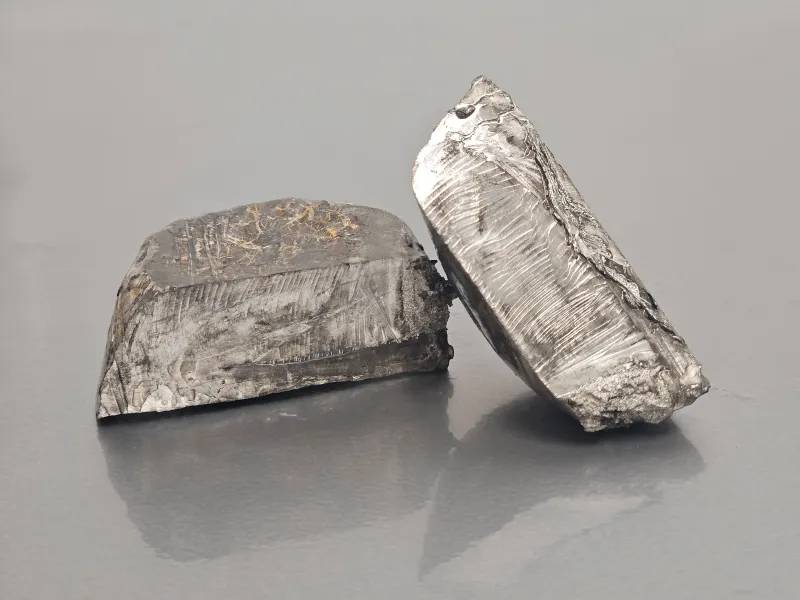
Для виробництва електромобілів необхідні літієві батареї. Фото: TIME
Літій, безсумнівно, став одним із найбільш затребуваних металів сьогодення. На тлі кліматичної кризи, яка з кожним роком загострюється, світові країни намагаються поступово відмовлятися або принаймні зменшувати свою залежність від викопного палива, як-от нафта та газ, і перейти до екологічного виробництва енергії.
Літій, як надлегкий метал, грає вирішальну роль у переході на «зелену» енергетику. Він використовується у виробництві літієвих батарей, які можуть зберігати енергію та живити такі пристрої, як електромобілі. Він також важливий для виготовлення термотривкого скла та кераміки, наприклад, для електричних плит.
Хоча Україна наразі не видобуває літій, вона потенційно може стати одним із найбільших постачальників літію для ЄС, де попит на цей метал зростає з кожним роком. За даними Державної служби геології та надр, поклади літію в Україні становлять майже третину розвіданих родовищ у Європі та приблизно 3 % світових запасів. Вони сконцентровані на чотирьох основних ділянках: Полохівське, Добра, Шевченківське та Крута Балка.
За оцінками експертів, Україна має орієнтовно 500 000 тонн літію, які оцінюються в 11,5 трильйонів доларів США. Точні запаси не відомі, оскільки ця інформація засекречена урядом.
2. Графіт
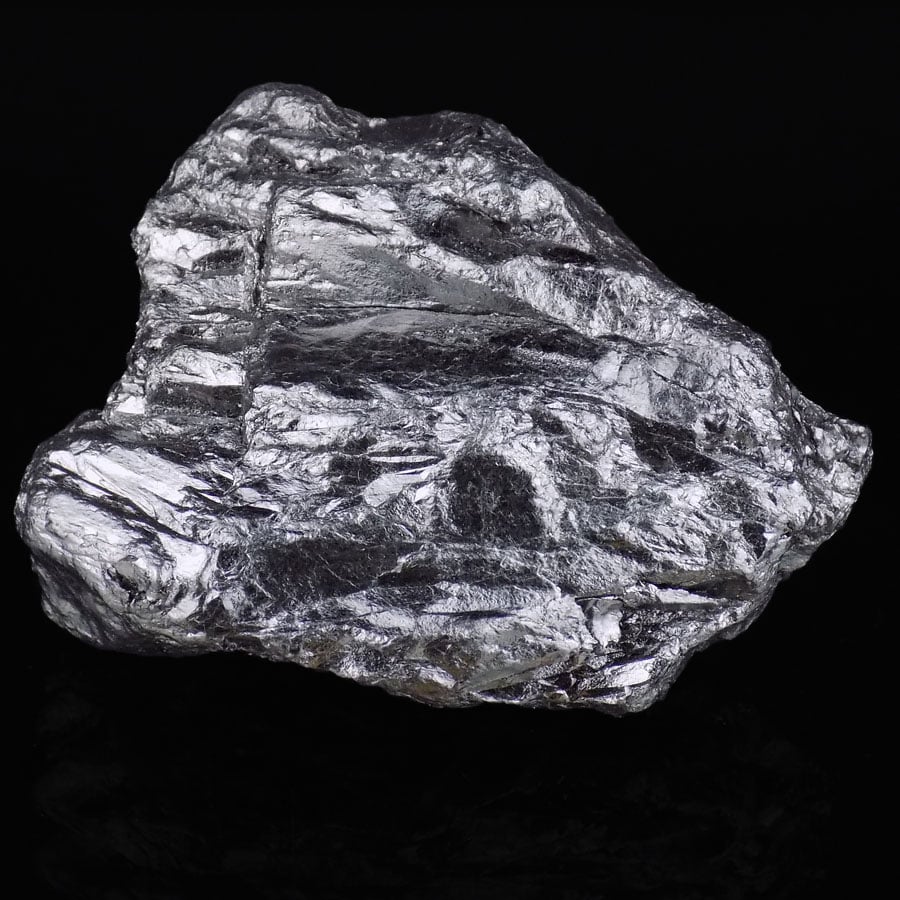
Графіт витримує надзвичайно високі температури. Фото: Geology Superstore
Ви думали, що графіт використовується лише в олівцях або для виготовлення синтетичних алмазів? Насправді він, як і літій, є одним із найголовніших складників в акумуляторах та батареях. Цей мінерал може проводити електрику, тому його можна зустріти в електродах, нагрівальних елементах і щітках для електродвигунів. Він також використовується в будівництві активних зон (цетральних частин) ядерних реакторів.
Запаси графіту в Україні входять до п'ятірки найбільших у світі. Із шести родовищ, серед яких Балахівське, Завалівське, Зарічне та Буртинське, добувають 5 500 тонн графітового концентрату на рік, але зареєстровані запаси графіту значно більші — приблизно 13,7 млн тонн. Українська інвестиційна компанія BGV Group Management, яка розвиває власний проєкт із видобутку графіту в Інгулецькому (в колишньому — Балахівка), заявила, що розрахунки її експертів показують, що поклади місцевого родовища можуть становити майже 500 млн тонн.
Роман Опімах, колишній генеральний директор Державної служби геології та надр, підтверджує потенціал України в покладах літію, графіту та інших корисних копалин:
«Виявлених запасів літію, графіту, нікелю та залізної руди буде достатньо для виробництва літієвих акумуляторів загальною місткістю 1000 гігават-годин, яких вистачить, щоб забезпечити виробництво приблизно 20 мільйонів електромобілів або інших пристроїв».
3. Берилій
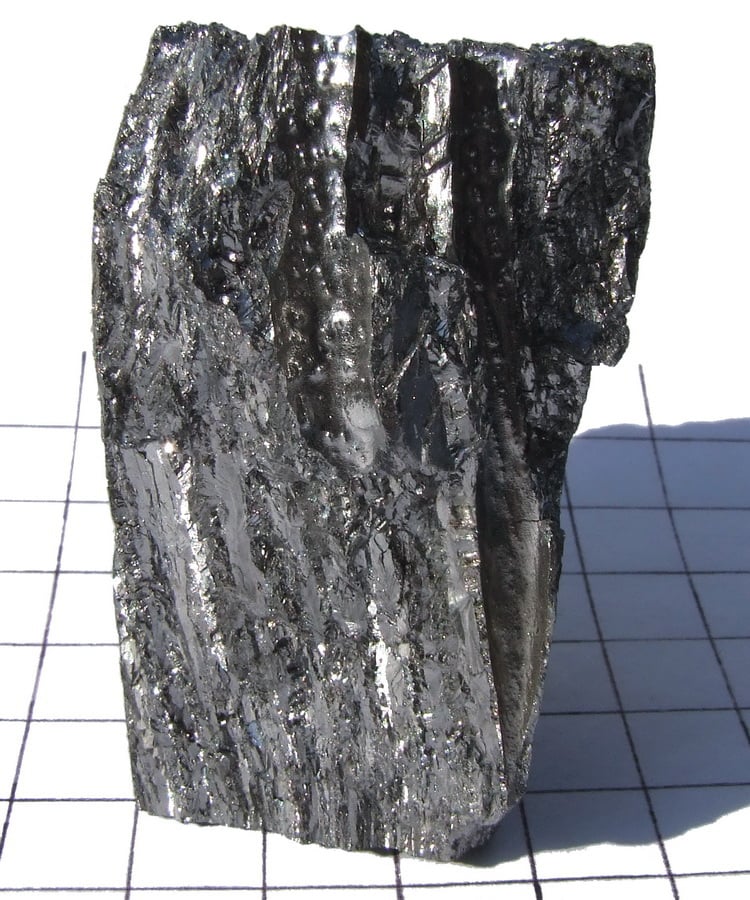
Берилій — твердий метал, але крихкий при кімнатній температурі. Фото: Alchemist-hp
Берилій, четвертий за легкістю та досить рідкісний метал на Землі, видобувається в лише в трьох країнах: США, Казахстан і Китай. Він вважається безцінним у багатьох промисловостях, таких як аерокосмічна, оборонна, медична, комунікаційна, транспортна та ядерна — використовується у виробництві деталей для літаків, орбітальних телескопів, медичного обладнання, зброї, подушок безпеки й так далі.
Україна входить до унікального клубу країн із підтвердженими покладами берилію. За даними Державної служби геології та надр, в Україні зосереджено 15 300 тонн оксиду берилію (BeO), що може задовольнити світові виробничі потреби в мінералі продовж 40 років. Усі запаси берилію містяться в Пержанському родовищі, яке також є джерелом танталу, ніобію, цирконію, молібдену, літію, цинку та інших корисних копалин.
Компанія BGV Group Management, яка має ліцензією на видобуток берилію в цьому родовищі та провела аналіз його потенціалу, оцінює його в 37 000 тонн BeO.
4. Титан
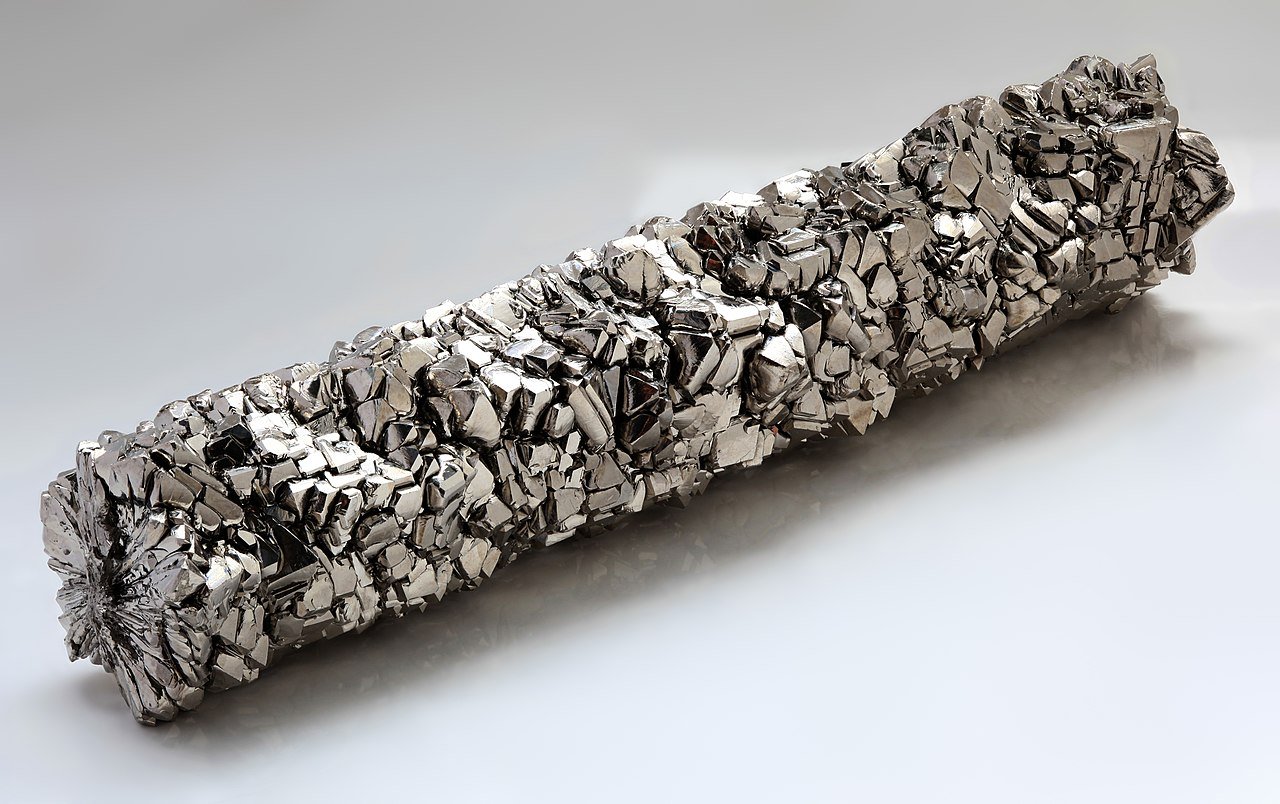
Кристалізований злиток титану. Фото: Wiki Commons
Не дивно, що титан, один із найміцніших металів на Землі, названий на честь могутніх грецьких божеств титанів. Він стійкий до корозії та надзвичайно високих температур, а його сплави мають найвище співвідношення міцності до густини серед усіх металів. Він є стратегічно важливим для цивільної та військової аерокосмічної, автомобільної та суднобудівної промисловості, а завдяки своїй біосумісності також має широке застосування в медицині: виготовлення протезів, штучних суглобів, зубних імплантатів тощо.
Україна може похвалитися найбільшими запасами титану в Європі. Використовуючи лише 35 % своїх родовищ, наша країна забезпечує 7 % світового виробництва цього критично важливого металу. Держава вже виявила 28 родовищ із корисним копалинами зі вмістом титану, на які припадає 15 років світового видобутку титанових руд. Як одна з небагатьох країн, що видобувають титан, Україна у 2022 році посіла 9-те місце серед найбільших світових експортерів титану та заробила $157 млн.
Навіть попри війну, Україна може стати головним постачальником титану для ЄС, який не добуває та не виробляє титан і повністю покладається на імпорт, переважно з росії. Дмитро Каландадзе, член правління UMCC Titanium, одного з найбільших світових виробників титану, заявив: «Український титан назавжди покладе край залежності Заходу від російської федерації».
5. Рідкісноземельні елементи
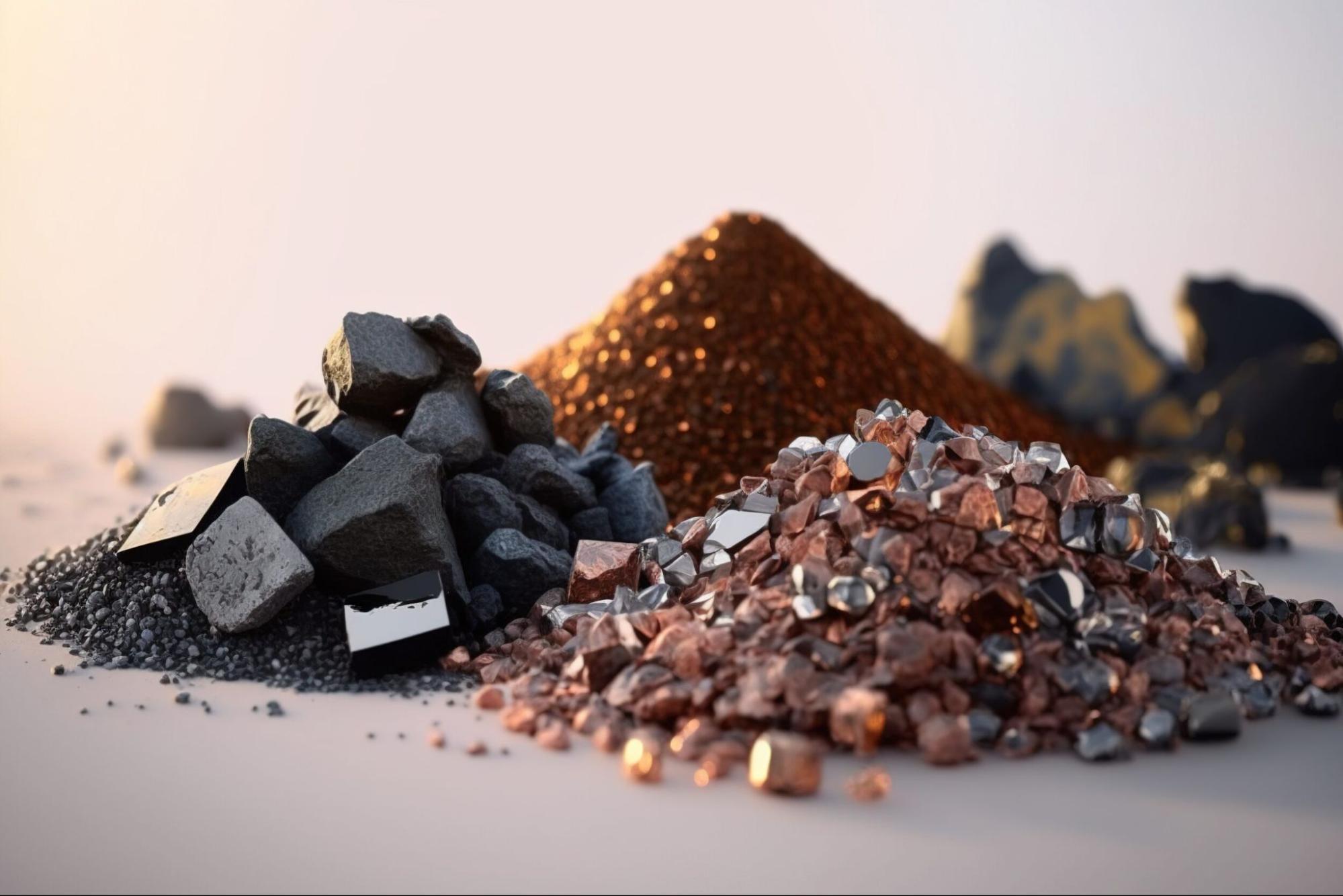
Акумулятори, для виготовлення яких використовують рідкісноземельні метали, приблизно вдвічі ефективніші за свинцево-кислотні автомобільні акумулятори. Фото: Дослідницький фонд Квебеку
Рідкоземельні елементи або метали, зокрема церій, ітрій, лантан і неодим, які вже опинялися в центрі уваги через скандал Трампа з Гренландією, насправді не такі вже й рідкісні, попри свою назву. Оскільки ці 17 рідкісноземельних металів розсіяні у всьому світі, а не сконцентровані в певних регіонах, вони високо цінуються та мають великий попит.
Рідкісноземельні метали відіграють ключову роль у майбутньому відновлюваної енергетики — вони необхідні для виробництва електричних вітрогенераторів, енергоефективних ламп, електромобілів і акумуляторних батарей. Вони також використовуються в чорнилі для купюр, щоб запобігати підробці грошей, та повсякденних гаджетах, таких як iPhone і пристрої для зберігання даних, які почали бути компактнішими й легшими завдяки рідкоземам.
Точні запаси рідкісноземельних елементів в Україні не відомі, оскільки родовища ще не розроблені, але експерти оцінюють, що наша країна має найбільші поклади рідкісноземельних металів у Європі, які можливо видобути. За даними Державної служби геології та надр, українські рідкоземи містяться в шести родовищах, включно з найбільш розвіданим Новополтавським родовищем апатитових руд.
6. Уран
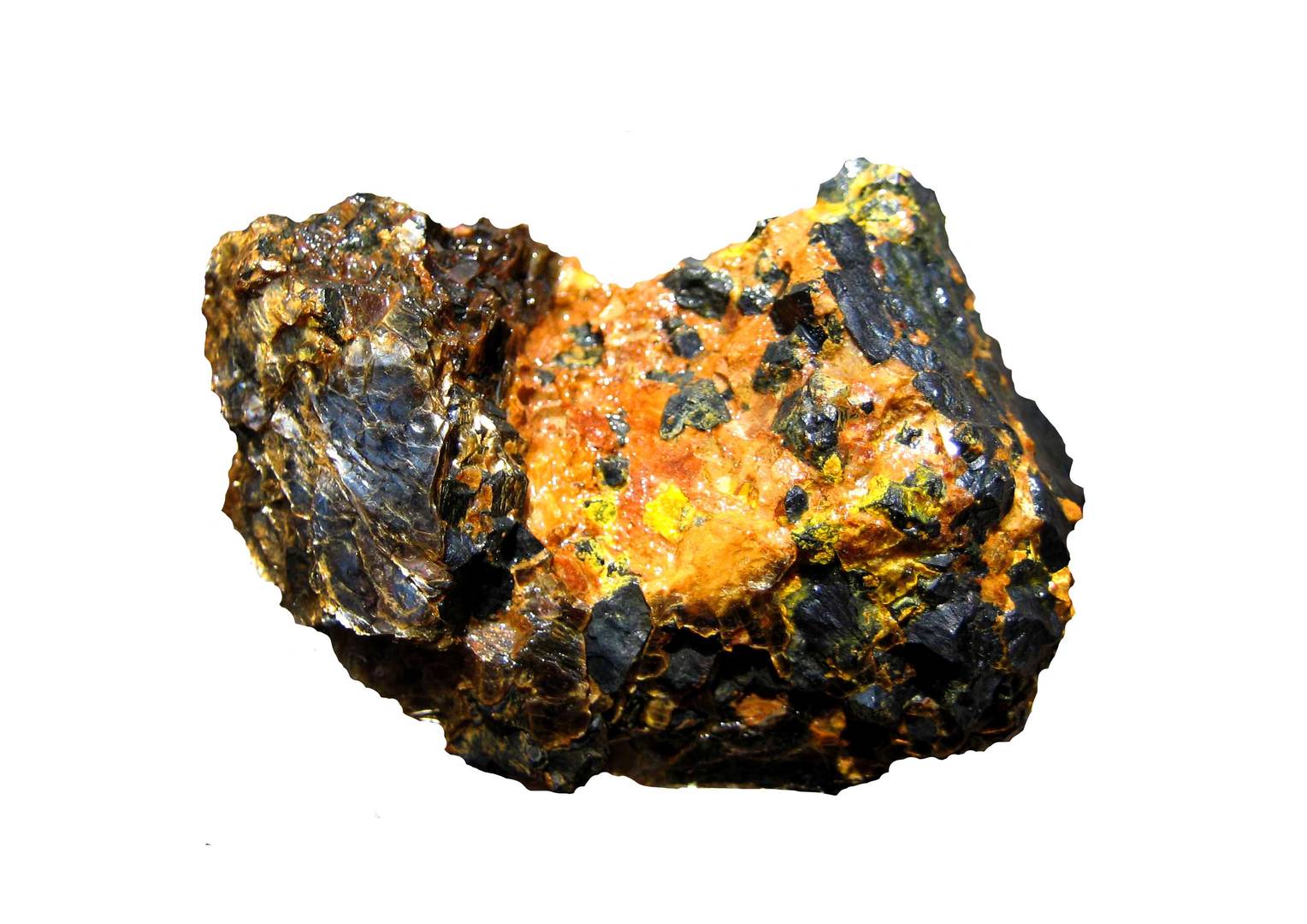
Атоми урану важчі за атоми будь-якого іншого природного елемента. Фото: ALS Global
Уран є одним із найефективніших ресурсів, який може забезпечити низьковуглецеве енергопостачання. Один кілограм цього щільного й міцного металу в змозі виробити стільки ж енергії, скільки 3000 тонн вугілля. Саме тому він може стати основою для енергетичної безпеки України та інших європейських країн, які історично завжди залежали від російських нафти й газу.
Очікується, що попит на уран як основного палива для ядерних реакторів, які тепер менші та безпечніші, зростатиме. Це можна пояснити тим, що країни світу, учасники Паризької угоди, вживають заходів для скорочення викидів парникових газів та переходять на відновлювану енергетику, що також включає ядерну.
Маючи найбільші запаси урану в Європі, Україна стабільно входить до першої десятки світових виробників уранової руди. Видобуваючи її на трьох шахтах у Кіровоградській області, наша країна виробляє 2 % світового обсягу уранового концентрату й забезпечує майже 30 % потреб своїх атомних електростанцій. З 2021 року Україна розробляє проєкт із виробництва ядерного палива, який допоможе виробляти більше електроенергії. Як і сировину, електроенергію також можна експортувати.
7. Галій
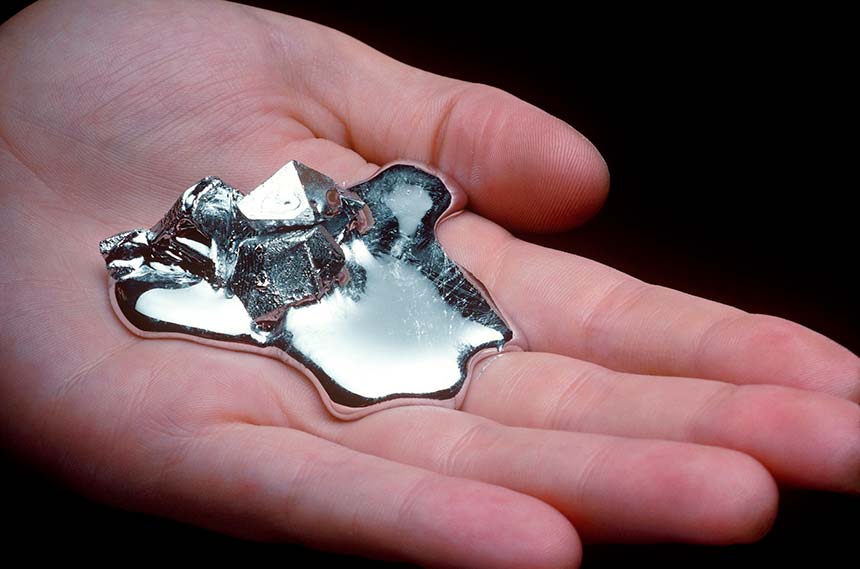
Атоми галій розширюється при замерзанні. Фото: Navitas
Галій, який часто називають «нетоксичною альтернативою ртуті», є одним із найбільш унікальних металів на планеті. Він плавиться від людського дотику, але щоб довести його до температури кипіння, його потрібно нагріти до понад 2 000 градусів Цельсію.
Галій надзвичайно універсальний метал для електроніки, оскільки він може перетворювати електрику на світло й навпаки. Його сполуки, арсенід галію та нітрид галію, є напівпровідниками та можуть заміняти кремній у таких пристроях, як червоні та зелені світлодіоди, смартфони та сенсори.
Галій також має великий попит у сфері відновлюваної енергетики. Він став незамінним у виготовленні магнітів для вітрових турбін і сонячних панелей. Деякі експерти прогнозують, що галій може стати ціннішим за літій для виробництва акумуляторів. Американські дослідники навіть стверджують, що гібридні батареї з галієм можуть генерувати більше енергії та заряджатися швидше, ніж сучасні літій-іонні батареї.
Україна посідає п'яте місце у світовому списку виробників галію, який вона отримує з інших руд. Китай нещодавно заблокував експорт галію до США та країни заходу почали шукати заміну. Це означає, що попит на галій зростатиме і далі, що робить Україну привабливою альтернативою для поставок галію.
Майбутнє української сировини
Хоча в цьому переліку згадуються найважливіші мінеральні ресурси України, він лише частково відображає повний потенціал нашої країни, як «супердержави у сфері видобутку сировини». Окрім згаданих ресурсів, Україна має й інші переваги, які роблять її інвестиційним магнітом. Це прозора система аукціонів, доступність геологічної інформації, нижчі ціни тощо.
Україна також розвиває критично важливу сировину, пропонуючи іноземним компаніям дозволи на розвідку таких корисних копалин, як кобальт, нікель та літій. У 2021 році вона підписала угоду про стратегічне партнерство з ЄС із реалізації 100 проєктів, щоб розробити десять критично важливих мінералів. Ця співпраця може підтримати українську економіку та допомогти Європі перейти до сталих джерел енергії.
Повномаштабне вторгнення росії заважає Україні реалізувати повний потенціал як глобального постачальника критично важливої сировини, яка могла б покласти край залежності Європи від імпорту з росії та Китаю. Видобуток і розвідка багатьох родовищ корисних копалин, таких як марганець, цирконій, нікель, і більшість з перерахованих вище ресурсів, призупинено через руйнування, окупацію або ж наближеність регіонів багатих на ресурси до лінії фронту.
Попри те, що росія захопила значну частину українських родовищ і прагне видобути якомога більше корисних копалин, поки вона має над ними контроль, Україна не втрачає надії. Уряд усе ще пропонує дозволи на видобуток корисних копалин і просуває потенціал українських мінеральних ресурсів під час міжнародних зустрічей у рамках «Плану перемоги» президента Зеленського. Союзники, такі як Франція та Велика Британія, підтримують розроблення українських надр угодами про співпрацю.
Приватні українські компанії, такі як Beholder, які досліджують рідкісноземельні елементи та інші корисні копалини в Україні за допомогою штучного інтелекту та дронових технологій, далі залучають іноземні інвестиції, а воїни ЗСУ віддають свої життя, щоб звільнити захоплені українські землі та народ.
Критично важлива сировина дійсно може прокласти шлях до благополучного майбутнього України, як сильної в економічному плані країни та партнера для її європейських сусідів, і тепер, з Трампом у Білому домі, вона, можливо, стане тією розмінною монетою, яка врятує хитке становище американської військової допомоги.



